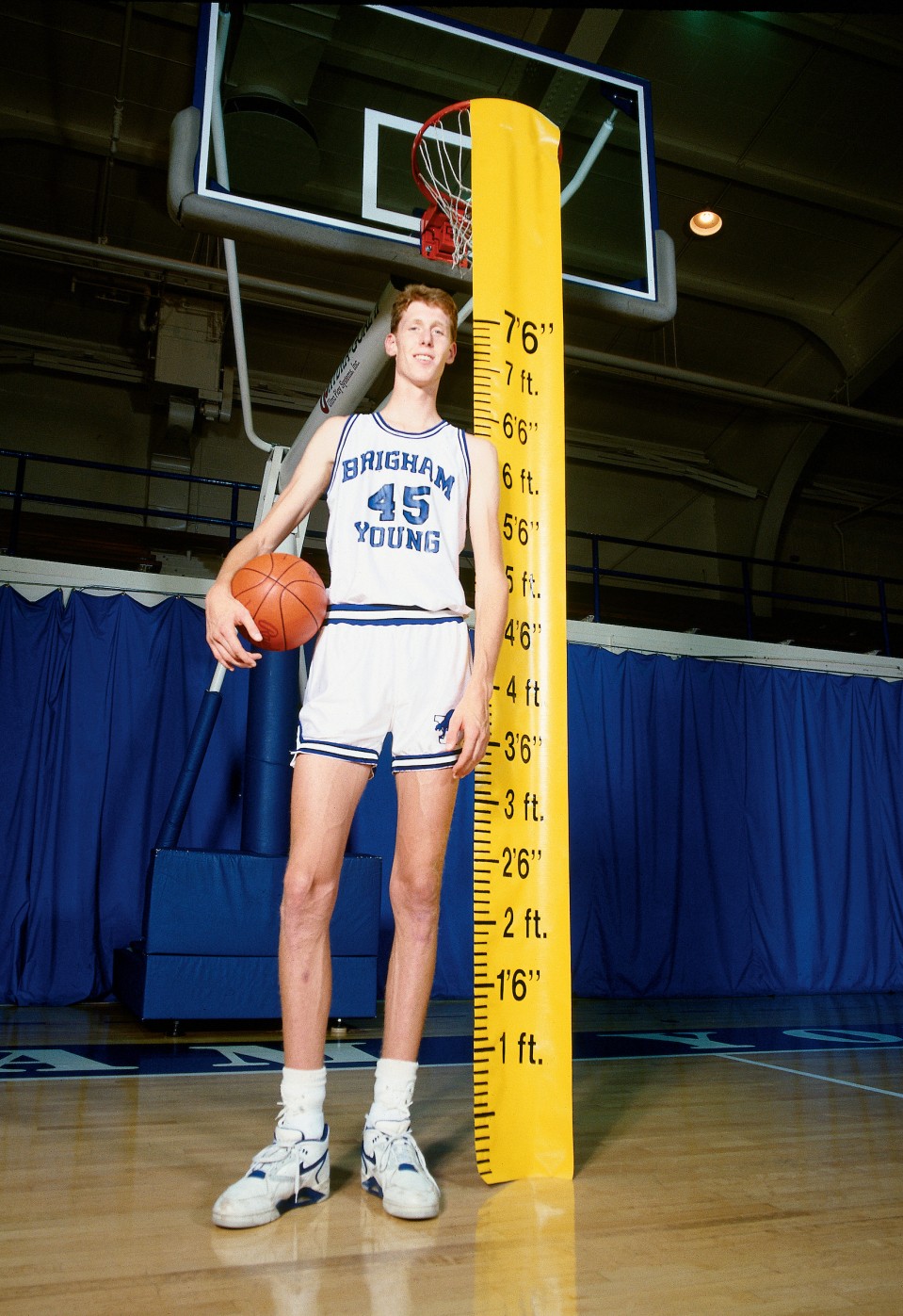Biotechnology / DNA Testing
Biologists checked out this NBA player’s DNA for clues to his immense height
Gene scores can pick most people likely to be extremely tall, super smart, or out of the ordinary.



As a first-round draft pick from Brigham Young University, Shawn Bradley caused a hubbub during the 1993 NBA draft. That is because he was 7' 6" tall.
That’s five inches taller than Shaquille O’Neal, the NBA superstar drafted the year earlier. Bradley could touch the rim without lifting his feet.
Now researchers who have had a look at Bradley’s DNA say they figured out why he’s so tall.
According to a team at Brigham Young University, Bradley doesn’t have some unusual mutation or a pituitary gland disorder like Andre the Giant.
Instead, he seems to have won the jump ball of genetic luck, inheriting a combination of entirely normal genetic variations that, in combination, helped make him taller than 99.99999 percent of people.
(Think about this way: you’d have to line up 10 million people to find anyone taller.)
Brigham Young University biologist John Kauwe met Bradley after getting bumped to first class during a flight and recognizing the player, who was crowded awkwardly into the extra-roomy seats. They started talking, and Bradley agreed when Kauwe admitted he’d like to study the player’s DNA.
The research team was interested in applying a new technology called polygenic risk scoring.
The basic idea behind such a risk score is to measure subtle pluses and minuses in someone’s genome and add them up to yield a prediction—of how tall the person will be, say, or how likely to develop heart disease, or even how smart.
These scoring systems are both very new and hotly debated. It’s only in the last couple of years that gigantic DNA databases have let scientists zero in on the small, but numerous, gene differences that shape traits such as height.
Many scientists remain skeptical, saying these kinds of predictions remain too iffy for practical use. That’s because the new techniques don’t capture all the genetic clues. And not everything about you is due to DNA, either. For most people, who are near the average anyway, the predictions won’t tell much.
Yet things do get interesting at the extremes. It’s what made Bradley’s DNA worth looking at. For those few people who have extremely high or low scores, it can signal some sizable consequences.
When Bradley’s DNA was compared with that of 1,020 other people, he was correctly ranked number one among them on predicted height.
Spotting outliers may be useful in medicine. In August, for instance, Boston scientists said they believed people should have these kinds of tests for heart risk. That was after they found that people with very highest scores really do have a worrisome chance of a heart attack.
Extreme DNA may matter in behavior, too. Some psychologists believe parents should be checking their kids to see if they’re predicted to be extremely smart (or just the opposite). Just like height, intelligence is heavily influenced by the genes you inherit.
“The potential for identifying outliers is certainly there,” Kauwe said in an e-mail. “We have an interest in several extreme phenotypes—IQ would be very interesting.”
Kauwe says his team is currently looking for people with extreme scores for Alzheimer's disease risk. "If we can use genetics to know who will be in these extremes we can prioritize people for use in clinical trials," he says.
Kauwe didn’t take a position on whether polygenic scores should be used to spot elite athletes or scholars at a young age. He said he thinks there are complex “moral issues” surrounding the technology that haven’t been resolved.
The genetic predictions also still have limited accuracy. Although Bradley was correctly identified as an outlier, it didn’t come at all close to pinpointing his actual height of over seven feet. Nor could it say if he’d have the basketball talent to go with it.